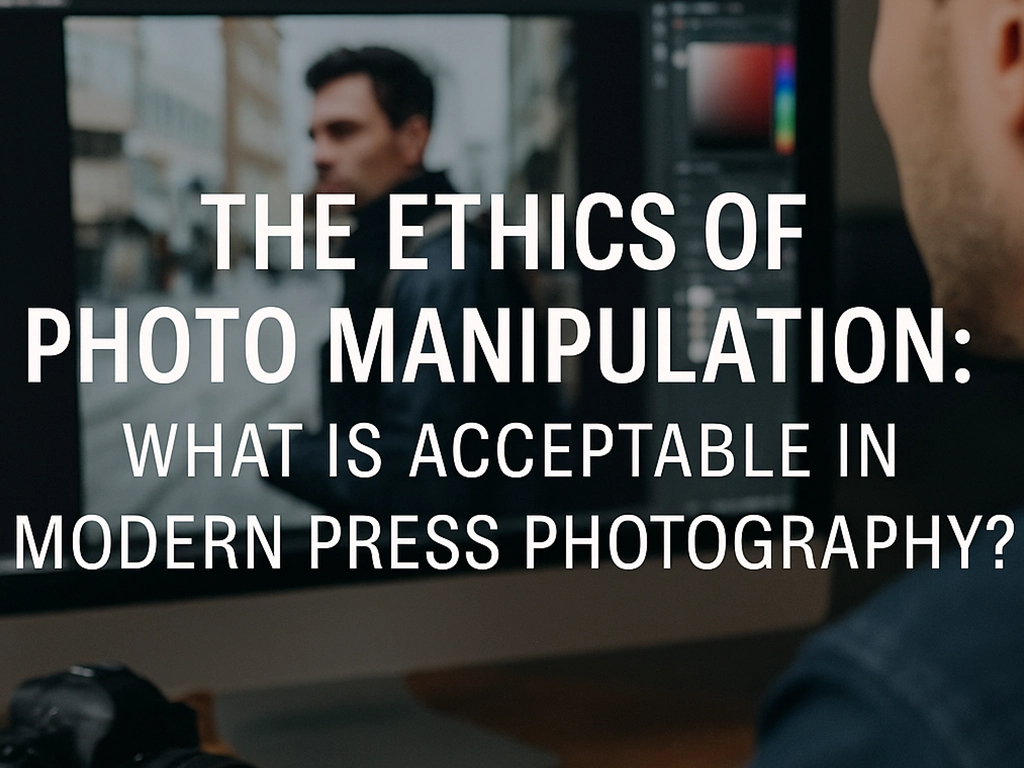The Role of Photographs in Journalism
Press photography serves both as a factual document and as a means of storytelling. Images often speak to the audience more directly than words, capturing events, emotions, and details that written accounts cannot fully convey. In conflict zones, natural disasters, political rallies or cultural events, photographs bear witness to the reality on the ground.
With this great power comes immense responsibility. The integrity of press photography is based on the audience’s confidence that the image represents reality as it took place. Any manipulation that alters this reality can mislead viewers, distort narratives, and ultimately damage the credibility of both the journalist and the media company.
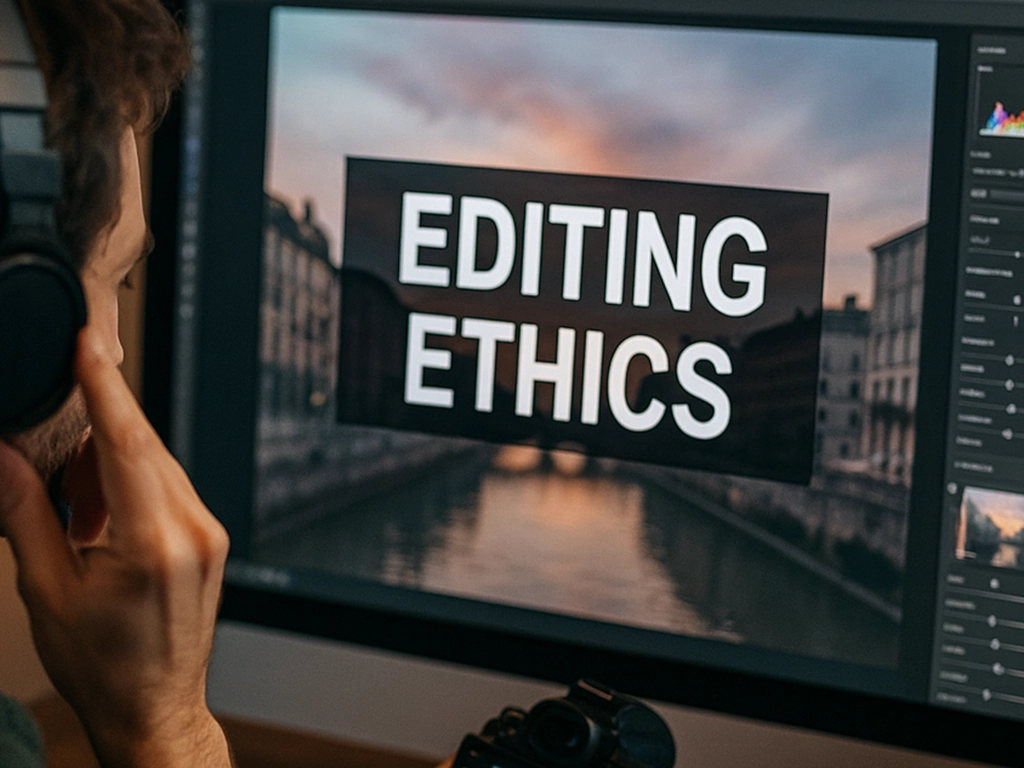
Not all photo editing is unethical. Certain adaptations are widely accepted across the industry if they serve technical or journalistic purposes without altering the veracity of the image. These acceptable forms of editing are limited to improving the technical quality of the image to ensure that it reflects exactly what the photographer saw at the time of shooting.
1. Basic Exposure Compensation
The lighting conditions in the field are often imperfect. Adjusting brightness, contrast, highlights, and shadows helps replicate what the human eye perceived at the crime scene. These corrections ensure that viewers can clearly see details that could otherwise be lost due to underexposure or overexposure. However, such adjustments must be made moderately, without exaggerating or obscuring elements of the photo.
2. Adjustments to color balance and white balance
Ambient lighting can cause color casts that distort the true colors of a scene. Color temperature and white balance correction ensures that skin tones, environmental influences, and important details appear natural and true-to-life. This adjustment helps to maintain an accurate representation of the original scene as it unfolds.
3. Crop for the composition
Cropping is often used to enhance composition and focus on the main subject, while removing distracting or irrelevant peripheral elements. However, ethical cropping must not remove the context that changes the meaning of the image. The crop should never hide or omit important information that could mislead the viewer about the nature or extent of the event.
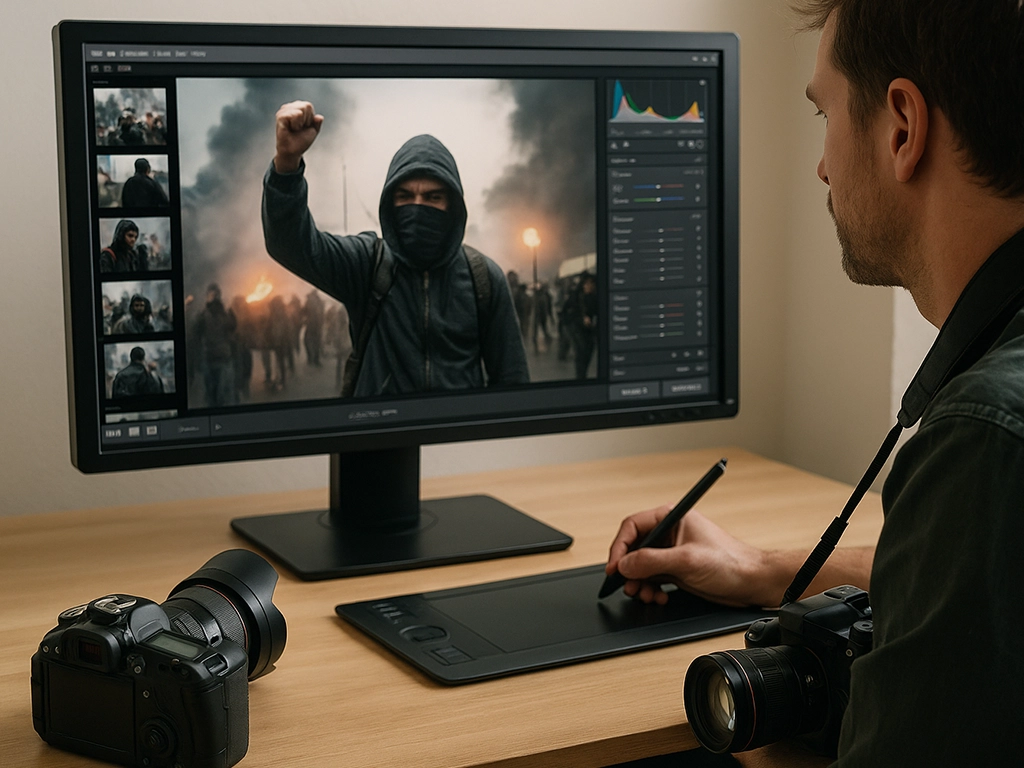
6. Sharpness and clarity adjustments
Sharpness enhancements help an image appear crisp and focused, especially when printed or viewed on digital screens. Ethical sharpening should preserve the natural appearance of the image and avoid the introduction of artificial edges or textures that were not present in the original shot.
5. Noise reduction and lens correction
In low-light conditions or high ISO values, digital noise can obscure important details. The gentle noise reduction can improve the image quality without compromising the details. Lens correction, including adjusting distortion or removing vignetting, ensures that the image remains true to what is being seen, while correcting known limitations of certain camera equipment.
6. Removal of dust stains and sensor artifacts
Sometimes, technical defects such as dust on a camera sensor result in stains that are not part of the scene. Removing these minor technical flaws is generally considered acceptable as long as the editing does not remove the actual visual content that was part of the scene.
These technical adjustments improve the visual quality of an image while maintaining its factual integrity. The following always applies: The photo must remain an honest and accurate visual testimony to reality.
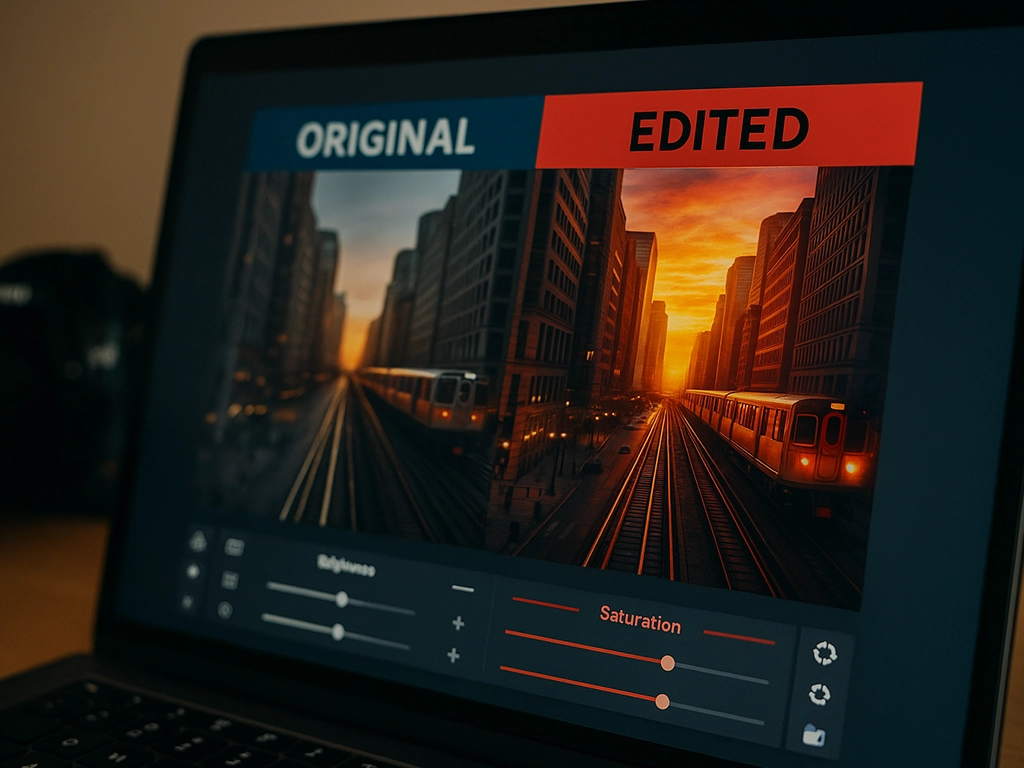
Unethical manipulations that jeopardize credibility
Once editing crosses the line of changing the content or meaning of an image, it becomes unethical. Journalists must avoid manipulations such as:
- Adding or removing elements: Inserting, deleting, or cloning parts of the image to change what was captured.
- Staging of scenes: instructing subjects to behave unnaturally so that the camera creates a certain narrative.
- Overprocessing: Applying extreme filters or edits that dramatically change the mood, tone, or apparent reality of the scene.
- Misleading captions or cropping: Cropping images in a way that removes essential context, or writing captions that misrepresent the image.
Such changes betray audience trust and can have serious consequences, especially when images influence public discourse or political outcomes.
The special challenge of AI-generated images
Recent advances in artificial intelligence have brought entirely new ethical challenges to press photography. AI tools can create hyper-realistic images from scratch or manipulate existing photos in ways that are difficult to detect.
While AI offers enormous creative possibilities, its use in journalistic contexts requires extreme care and full transparency. There is an important distinction between AI-powered images, which are used for visual illustration or to support blog articles, and AI-generated images, which are presented as authentic press photography.
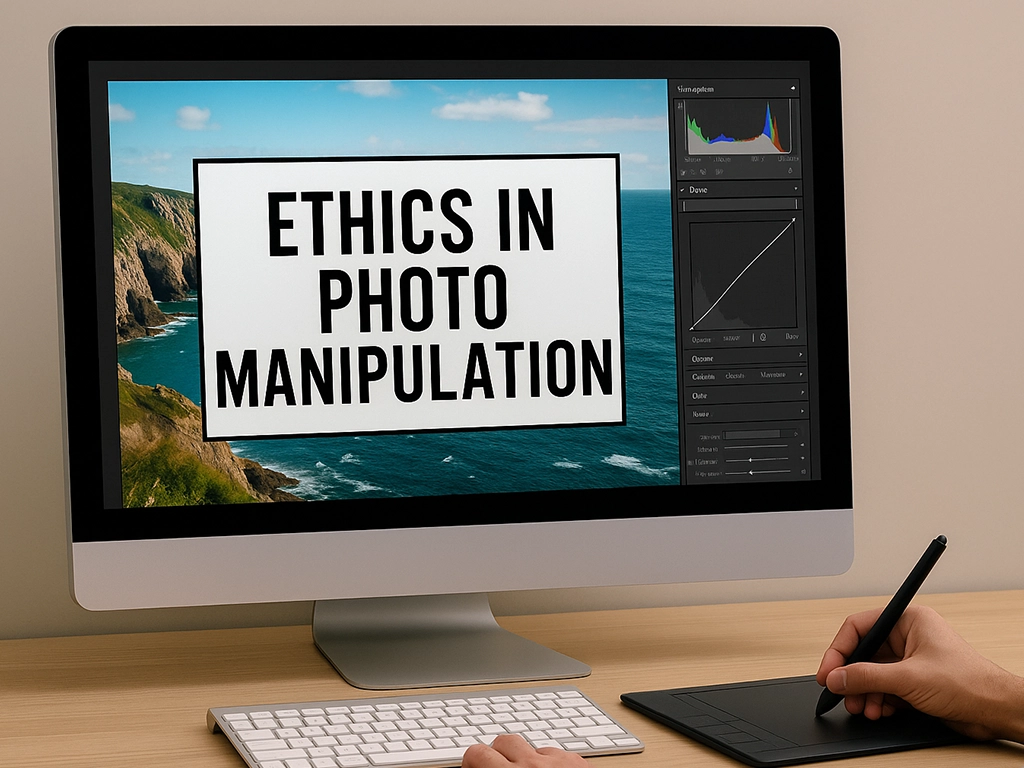
- Illustrative purposes for non-news features: For example, generating symbolic or conceptual images for opinion articles, blog posts, or thematic articles where no actual news event is visually documented.
- Visual design elements: Using AI to create generic backgrounds, cover photos, or decorative graphics that don’t trick readers into believing that they depict real-world events.
- Training, simulation, or education: AI-generated visualizations can be used in journalism workshops, training, or hypothetical scenario discussions, as long as they are clearly labeled as simulations.
Some of the unacceptable applications of AI in press photography include:
- Share AI-generated content as authentic news photography.
- To create completely fictional images to represent actual events that never happened.
- Using AI to manipulate existing images in a way that alters historical or factual reality.
For reasons of ethical transparency, any use of AI-generated images must always include clear disclosure to the audience. Transparency ensures that readers understand the nature of the image and can distinguish between documentary evidence and illustrative or artistic content.
The USPA supports the responsible and transparent use of AI tools when used correctly. In controlled environments – such as blog images, educational illustrations, or symbolic representations – AI can enhance journalistic work without violating ethical boundaries, provided that audiences are never misled about the nature or origin of the image.
The responsibility of editors and publishers
Photo ethics is not only the responsibility of photographers. Editors and publishers must also ensure that all images they publish meet ethical standards. Editors should establish clear guidelines for photos that:
- Request full disclosure of all edits applied to images.
- Conduct regular audits of the submitted photos.
- Provide ongoing ethics training for employees and freelancers.
Strong editorial oversight protects both the integrity of the publication and the trust of its audience.
Audience expectations and the fragile trust in photojournalism
Audiences expect press images to represent reality, albeit unconsciously. Betraying this expectation can have long-lasting consequences:
- Eroded trust in the media.
- Damage to the reputation of the photographer and the outlet.
- In some cases, there are legal consequences, especially if manipulated images influence political or legal outcomes.
Once trust is lost, it is extremely difficult to rebuild it. Therefore, transparency and integrity must remain at the heart of any photojournalistic work.
The USPA’s Role in Promoting Ethical Photojournalism
The United States Press Agency® strongly supports ethical standards in photojournalism and provides its members with important resources to help them meet these modern challenges:
- Training workshops on the ethics of digital editing and industry standards.
- Clear guidelines for acceptable editing practices for press images.
- Legal support for journalists accused of manipulation or copyright.
- Peer networks to share experiences and best practices with other press photographers worldwide.
In an era of sophisticated editing software and deepfakes, the USPA provides a secure professional community that emphasizes ethical responsibility and transparency.
Easy access to USPA membership and global support
Joining the United States Press Agency® is easy and opens the door to professional advice, global connections, and ethical support. Whether you’re a seasoned press photographer or just starting your career, USPA membership offers:
- Instant access to expert advice and educational resources.
- A network of trusted professionals dedicated to ethical journalism.
- Opportunities to share knowledge and stay up to date on evolving standards.
- Practical assistance in navigating the ethical and legal complexities of modern photography.
USPA membership demonstrates a strong commitment to ethical journalism while providing practical tools to strengthen professional skills.
Conclusion: Ethics as the basis of trust
In journalism, the camera lens is a tool for truth. The manipulation of images to serve narratives undermines not only the credibility of the individual, but also the reputation of the entire profession in society. With the advancement of digital technology, the responsibility to comply with ethical standards grows even more.
By committing to transparent, honest and accurate visual storytelling, press photographers protect the public trust that journalism relies on. The United States Press Agency® stands firmly by its members to uphold these values, providing both a professional safety net and an ethical compass for meeting the challenges of modern press photography.
